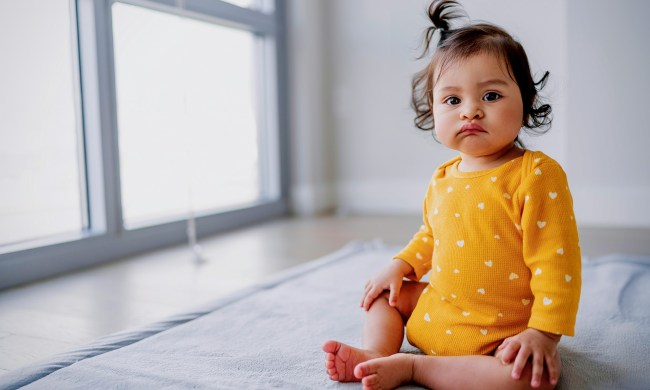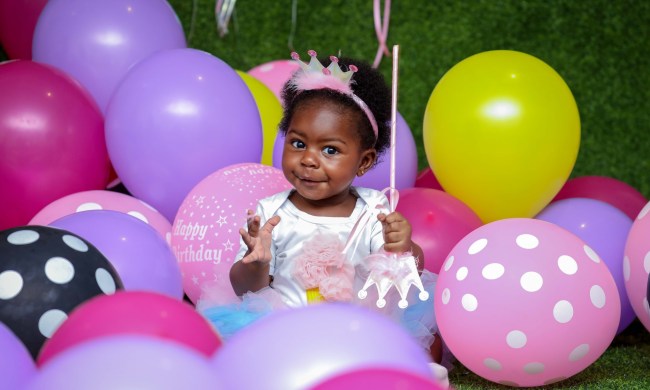Your baby is the new love of your life, but something you don’t love? Poop stains on everything. Babies have accidents, but that’s no reason you have to throw out perfectly good clothing (yours or the baby’s), blankets, toys, or any number of things.
Blowouts happen, but when they do, you can be prepared. The best thing you can do is act quickly, but the next best thing is to take advice from us. We’ve got all the best tips and tricks to help you deal with blowouts and eliminate staining so that your baby’s gear and your favorite shirt stay good as new. Let’s take a look at this “crappy” situation and turn it into a success story.
Speed is key
Those bright yellow poop stains set in fast, so the key to having a prayer at stain removal is acting immediately. Once poop dries, it can be impossible to remove the oily, set-in color, and that’s your first big move.
Once you’ve cleaned your baby up, rinse poop off in cold water. Heat can encourage the stain to set so treat the material first with cold water. You can toss it in the sink while you’re bathing your baby so you can deal with it later.

If you’re out, rinse poop off in cold water and put it in your wet bag. The clothing or material will stay moist until you can get home to treat it.
Treat stains first
The next step to helping work out stains is to treat them. This time, you’ll switch to warm water to encourage your stain fighters to penetrate the fibers of the fabric and help lift stains.
A few common methods for soaking poop-stained diapers:
- Use a fourth cup lemon juice with one cup of water in a spray bottle and spray or pour it into your soaking container. Lemon juice can help lighten stains on white clothing.
- Use a stain fighter like OxiClean to help remove stubborn stains.
- Use one tablespoon of dishwashing liquid and one tablespoon of white vinegar. Pour onto the stain and blot (don’t rub) to help lift stains.
- Use hydrogen peroxide to remove the protein-based stain provided you have a colorfast fabric. Test a small area first if you can. Spray or dab a small amount on the stain and allow it to bubble up and blot; don’t rub.
For all these pretreatment methods, rinse your fabric on the opposite side of the stain to avoid pushing stains through to the other side of the material. Move on to the washing stage.
Wash in warm water
Hot water can be hard on your clothing or other materials, so use this as a last resort. Warm water on a regular cycle can help remove and agitate the stain so that you get it removed.
- Use OxiClean to help remove the protein-based stain.
- If you don’t have OxiClean, add a cup of white vinegar to your wash, and launder your clothing or material to remove stains and odor.
The biggest help for poop stains is a laundry detergent with an enzymatic component. These types of detergents help remove protein-based stains like poop better than conventional detergents and control lingering odors.
Don’t dry until you’re sure
Throwing clothing in the dryer is a sure way to find out you didn’t really get the stain out after all. The heat from the dryer sets in stains and makes it tough to remove them from fibers. Take the stained material out of the wash and do one of two things:
- Air dry and inspect the garment. If there’s no odor lingering staining, you can launder as usual the next time you have to wash the garment or material.
- Lay it in the sunlight to dry. Sun can help bleach any remaining stains and remove odors through UV exposure. This is one of the ways people helped to remove stains before fancy stain removers, and it could also kill lingering bacteria.
Removing stains from floors and carpet

If your baby gets poop on your hardwood, tile, or linoleum, a quick swipe with a disinfectant and you’re good to go. But what if you’ve got a poop stain on the carpet? That’s a bit more challenging. Here’s what you need to do.
- Mix one tablespoon of white vinegar and one tablespoon of Dawn dish liquid in two cups of water.
- Apply the mixture with a clean, white cloth and blot the stain to remove it.
- Repeat until the stain and the odor are both gone.
- If there is any lingering staining, but no more coming up onto your cloth, use a dropper to apply hydrogen peroxide.
- Sponge the stain with cold water and allow it to dry naturally.
Once you’ve gotten the stain up, your carpet may still have matted fibers where the liquid has dried. Vacuum thoroughly to encourage the carpet fibers to fluff back up or use a carpet rake to agitate the fibers gently back to their original position.
Check the stain spot in a few days to ensure there are no lingering odors. Freshen with a bit of baking soda and vacuum the spot again to help get the fibers back to their original position and to hide any carpet matting from cleaning.
With thick, deep pile carpet, you may be able to cut out any fibers that remain stained. Gently part the carpet and use a thin pair of scissors to cut a single fiber. Fluff the carpet back with your fingers to check for any noticeable gaps. Don’t take too many, or you’ll end up with a hole in your carpet.
Dealing with stains
Acting immediately when you’re able to is the key to successful poop removal. Stains that sit for a long time are more likely to linger, but your favorite shirt or that adorable onesie may have a chance if you act now.
Whatever you do, avoid the dryer without checking on staining, and be patient with your pretreatments. Give them time to work so that when you do launder, they’re at their most potent. Don’t let those stains get you down — there’s hope yet!


